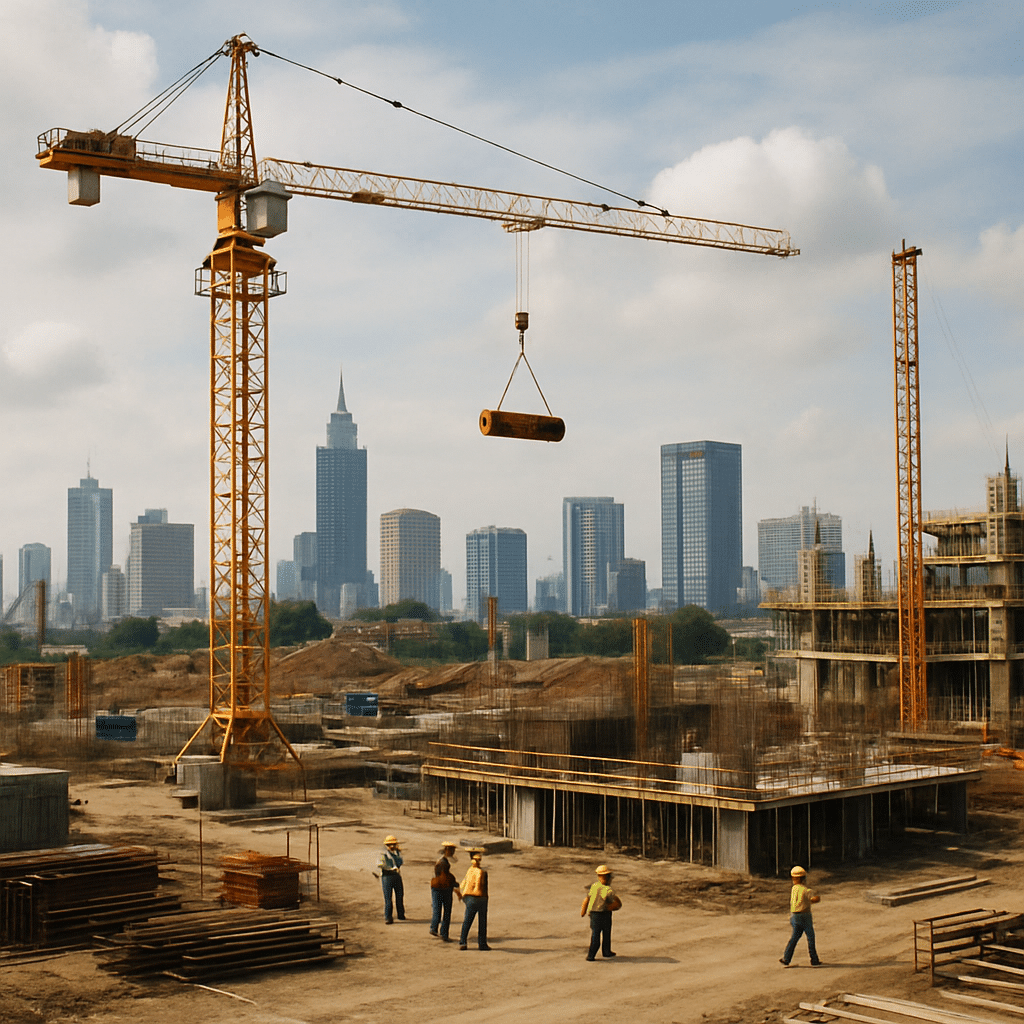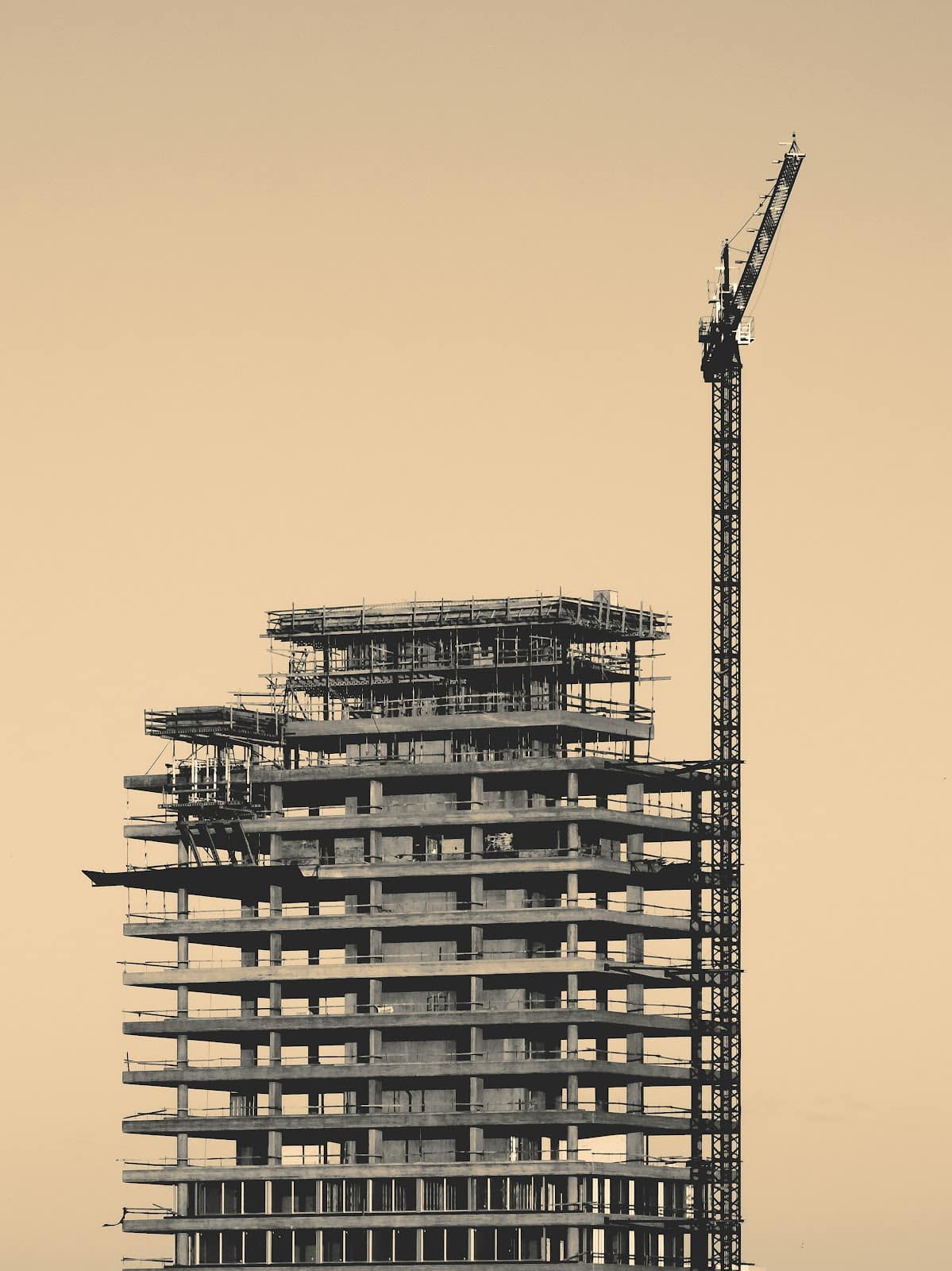How Location Affects Construction Costs: A City-by-City Comparison
Construction costs vary greatly across different cities. This variation is influenced by several factors. Understanding these factors is crucial for effective budgeting.
Location-based construction costs are shaped by local conditions. These include labor rates, material availability, and regulations. Each city presents unique challenges and opportunities.
For instance, Miami’s coastal location impacts its building codes. In contrast, Dallas benefits from central location and material availability. New York City faces high costs due to labor and regulations.
Chicago’s costs are rising with urban development. Houston offers competitive costs with a focus on energy efficiency. Seattle’s tech-driven economy influences its residential construction costs.
Los Angeles deals with seismic requirements and high land prices. Phoenix is growing, with costs expected to rise. Atlanta emphasizes sustainable building practices.
This guide provides a city-by-city comparison. It helps readers understand regional variations. Make informed decisions with this comprehensive analysis.
Understanding Location-Based Construction Costs
Location-based construction costs are not uniform across regions. Each city has distinct factors affecting its building expenses. These factors require careful consideration in the budgeting process.
Several elements drive these costs. Labor rates, material costs, and local regulations play significant roles. Environmental conditions and geographic challenges also impact the final figures.
Understanding these elements is key for anyone planning a project. Budgets need to account for these location-specific expenses to avoid unexpected surprises. This approach helps in setting realistic financial goals.
Key aspects influencing construction costs include:
- Local labor availability and wages
- Material prices and supply chain issues
- Regulatory and permit requirements
Understanding these variables can greatly assist in budgeting. By analyzing each factor, stakeholders can better predict cost changes and manage project funds effectively.
Key Factors Influencing Regional Construction Costs
The cost of construction is highly influenced by regional factors. Each factor contributes uniquely to overall expenses.
Labor availability and rates significantly impact costs. Cities with high demand for skilled labor often have higher wages. This escalates construction budgets.
Material costs also vary by location. Supply chain efficiency and local availability can affect pricing. Importing materials increases costs due to transportation fees.
Regulations and permits add another layer of complexity. Cities with stringent codes require more investment in compliance. This influences both time and financial resources.
Environmental factors such as climate pose additional challenges. Construction in areas with extreme weather incurs costs for protective measures. These precautions ensure durability and safety.
Key influences include:
- Workforce availability and labor costs
- Accessibility and cost of materials
- Regulatory requirements and compliance
- Environmental and weather-related challenges
Each of these factors plays a role in shaping local construction costs. Understanding them aids in effective cost estimation.
Labor Rates and Availability
Labor rates are a significant part of construction costs. Areas with high economic activity often have higher labor expenses. This affects both residential and commercial projects.
Cities with a limited labor pool might face delays. Finding skilled workers becomes challenging, further escalating costs. Projects can be delayed when there aren’t enough workers.
Common labor-related factors include:
- High demand for skilled workers
- Wage variations across cities
- Availability of specialized professionals
Efficient labor utilization is key. Managing workforce effectively reduces unnecessary expenditures. Proper planning can help mitigate labor-related risks.
Material Costs and Supply Chains
Material costs are crucial in construction budgeting. Prices depend on local supply and demand dynamics. In cities where materials are scarce, prices can soar.
Efficient supply chains reduce costs. Cities near manufacturing hubs often have lower material costs. Quick access to resources minimizes transportation fees.
Factors affecting material costs include:
- Proximity to suppliers
- Seasonal demand variations
- Transportation and logistics
Strategic sourcing helps control expenses. Planning for fluctuations in material costs is vital. This ensures projects stay within budget.
Local Regulations, Permits, and Building Codes
Local regulations can heavily impact construction expenses. Cities enforce specific building codes that can vary widely. These codes ensure safety and compliance.
Complex permit processes can delay projects. Meeting regulatory requirements often means additional costs. This affects both timelines and budgets significantly.
Key regulatory considerations are:
- Permits and licensing requirements
- Building code compliance
- Environmental and zoning laws
Preparing for these challenges is essential. Understanding local regulations helps in effective project planning. Compliance is crucial to avoid costly penalties.
Climate, Weather, and Environmental Risks
Climate and environmental risks influence construction strategies. Areas prone to extreme weather need additional precautions. These include stronger building materials and designs.
Weather fluctuations can cause delays. Rainy seasons or harsh winters slow construction progress. This impacts timelines and increases overall costs.
Important environmental factors are:
- Seasonal weather patterns
- Risk of natural disasters
- Climate-related construction adaptations
Planning for climate-related challenges is essential. Investing in protective measures ensures project longevity. Sustainable practices mitigate environmental impacts.
by Julien Lanoy (https://unsplash.com/@lnyjulien)
City-by-City Construction Cost Comparison
Construction costs can vary dramatically from city to city. Regional differences play a crucial role in shaping these variations.
In this section, we will compare construction costs across key U.S. cities. Understanding these differences can help in better budgeting and planning.
Miami, FL: Construction Cost Estimation and Budgeting Guide
Miami’s location-based construction costs are shaped by its coastal proximity. Building for hurricane resistance adds to overall expenses.
The city’s real estate market contributes to price fluctuations. High demand for luxury properties influences the cost per square foot.
Key factors in Miami’s construction costs include:
- Hurricane-resistant building codes
- Luxury market demands
- Coastal regulations
Budgeting for Miami construction means accounting for these unique aspects. This ensures projects meet local standards and market needs.
by Verstappen Photography (https://unsplash.com/@verstappen_photography)
Dallas, TX: Construction Cost Estimation and Budgeting Tips
Dallas benefits from its central location, offering lower construction costs. The availability of materials contributes to competitive pricing.
Residential construction costs in Dallas are attractive for new developments. The city’s expanding economy influences budgeting considerations.
Critical factors in Dallas construction costs:
- Central location and resource availability
- Competitive residential market
- Growing economic landscape
For cost estimation in Dallas, consider local labor markets. Leveraging regional resources can optimize budgets effectively.
by Zac Wolff (https://unsplash.com/@zacwolff)
New York City, NY: High-Cost Urban Construction
New York City’s construction costs rank among the highest in the U.S. High labor rates and stringent codes are major contributors.
The city’s dense urban environment escalates commercial and residential projects. Building in NYC demands careful financial planning.
New York City construction costs are influenced by:
- High labor and material costs
- Strict building codes
- Dense urban environment
The NYC construction budgeting guide emphasizes detailed cost management. Navigating complex regulations is critical for project success.
by Simone Hutsch (https://unsplash.com/@heysupersimi)
Chicago, IL: Construction Costs and 2025 Outlook
Chicago’s construction costs are on the rise, expected to increase by 2025. The city’s growing demand and urban development drive these changes.
Residential and commercial projects face unique challenges. Understanding local labor and material dynamics is essential for accurate cost estimation.
Factors influencing Chicago’s construction costs:
- Increasing demand and urban development
- Local labor market conditions
- Rising costs projected by 2025
Chicago construction budgeting tips focus on anticipating future trends. Preparing for economic shifts can optimize cost planning.
by Jp Valery (https://unsplash.com/@jpvalery)
Houston, TX: Competitive Costs and Energy Efficiency
Houston offers competitive construction costs, emphasizing energy-efficient practices. The city’s focus on sustainable methods supports attractive pricing.
The Houston TX building cost per square foot remains appealing. The energy sector’s influence on local markets shapes these dynamics.
Houston’s construction costs consider:
- Energy-efficient building practices
- Competitive square foot pricing
- Influence of the local energy sector
Houston construction budgeting guides prioritize cost-effective practices. Emphasizing energy efficiency enhances long-term savings.
by Hunter Reilly (https://unsplash.com/@hunterrei)
Seattle, WA: Residential Construction in a Tech Hub
Seattle’s residential construction costs are high, reflecting its tech-driven economy. Limited land availability affects pricing decisions.
The city’s economic boom increases demand, influencing construction dynamics. Understanding these pressures is vital for accurate cost estimation.
Key factors in Seattle’s construction costs:
- Tech-driven economic influence
- Limited land availability
- High demand for residential projects
Seattle construction budgeting tips focus on managing high-demand costs. Effective planning helps address space and demand constraints.
by JC Gellidon (https://unsplash.com/@jcgellidon)
Los Angeles, CA: Seismic Codes and High Land Prices
Los Angeles faces high construction costs due to seismic requirements. Strict codes ensure safety in this earthquake-prone area.
Land prices further elevate the cost to build. Navigating these factors requires detailed budgeting and planning.
Construction costs in Los Angeles are impacted by:
- Seismic building regulations
- Elevated land prices
- Complex regulatory environment
Los Angeles construction budgeting tips highlight the need for seismic compliance. Effective land use planning is also essential to manage costs.
by Griffin Wooldridge (https://unsplash.com/@dzngriffin)
Phoenix, AZ: Affordable Growth and 2025 Projections
Phoenix offers a more affordable construction market. Growth projections by 2025 predict rising costs as the city expands.
The city attracts residential and commercial projects due to its competitive pricing. Understanding local trends helps in effective budgeting.
Phoenix construction costs are influenced by:
- Affordable current pricing
- Projected growth leading to rising costs
- Expanding residential and commercial developments
Phoenix construction budgeting guide recommends anticipating future demands. Planning for projected growth ensures cost-efficiency.
by Simone Hutsch (https://unsplash.com/@heysupersimi)
Atlanta, GA: Moderate Costs and Sustainable Growth
Atlanta’s location-based construction costs are moderate, with an emphasis on sustainability. As the city grows, these factors gain importance.
Key factors include moderate labor costs and a growing economy. Sustainable building practices are becoming more prevalent in planning.
Atlanta construction costs are shaped by:
- Moderate labor cost environment
- Economic growth factors
- Sustainable building practices
The Atlanta construction budgeting guide advises incorporating sustainable elements. This not only meets regulatory demands but also promotes long-term savings.
by Matthew Woinarowicz (https://unsplash.com/@mattxfotographs)
San Diego, CA: High Demand and Limited Land
San Diego experiences high construction costs due to strong demand. Limited land availability further drives pricing upward.
The city’s desirable climate attracts residential developments. Understanding market trends is critical for accurate cost estimation.
San Diego’s construction costs include:
- High demand for residential properties
- Limited land availability
- Attractive climate contributing to demand
San Diego construction budgeting tips emphasize detailed market analysis. Recognizing these pressures aids in effective cost planning.
by Mariano Baraldi (https://unsplash.com/@nature_of_the_experiment)
Commercial vs. Residential Construction Costs by Region
Construction costs differ significantly between commercial and residential projects. Understanding these differences is crucial for effective budgeting.
Commercial construction involves complex requirements and higher regulatory standards. Factors such as location, industry type, and project size drive costs.
Key distinctions between commercial and residential construction include:
- Commercial projects require advanced infrastructure.
- Residential construction is often less regulated.
- Market demand varies by property type.
by Wengang Zhai (https://unsplash.com/@wgzhai)
Regional trends also play a vital role in cost variations. In Miami, commercial costs are impacted by luxury demands, while residential projects face coastal regulations. Meanwhile, Dallas benefits from lower costs due to ample resources and moderate demand.
Strategic planning based on these distinctions can optimize cost management. Tailoring budgets to regional and project-specific needs ensures successful outcomes.
How to Estimate Construction Costs in Your City
Estimating construction costs in your city requires careful planning and research. Local conditions significantly impact total costs.
Start by gathering data on local labor rates, material prices, and permit fees. These elements provide the foundation for your estimate.
Consider the following steps when estimating construction costs:
- Research local regulations and building codes.
- Compare past project data for similar builds.
- Consult local contractors and suppliers.
Adjust for unique factors such as climate and geographic challenges. For example, coastal cities may need hurricane-resistant designs, while others must address seismic considerations. Adjusting estimates for location-specific conditions ensures accuracy and reduces financial risks. Careful estimation lays the groundwork for successful construction planning and project execution.
Budgeting Tips for Major U.S. Cities
Budgeting for construction projects in major U.S. cities demands foresight and adaptability. Each city presents unique challenges and opportunities.
Key considerations include understanding local market conditions and economic trends. Being informed about these factors aids in formulating realistic budgets.
Here are some budgeting strategies for success:
- Identify cost-effective materials and suppliers.
- Align with local labor availability.
- Prepare for unexpected expenses and delays.
by Alex D’Alessio (https://unsplash.com/@alexdalessio22)
Engaging with experienced local professionals can provide insights into city-specific requirements. They can guide you through the complexities of urban construction processes. Adapting these tips to your specific project’s needs ensures you’re well-prepared for cost variations. Effective budgeting helps you manage resources wisely, keeping your project on track and within financial limits.
Future Trends: Construction Costs in 2025 and Beyond
Construction costs are poised to change by 2025 and beyond. Economic factors and technological advancements will play pivotal roles.
Materials and labor trends will shape future budgets. Innovations like 3D printing and smart materials may mitigate rising costs.
Key future trends include:
- Increased use of sustainable materials.
- Growing impact of technology on building methods.
- Enhanced focus on energy-efficient designs.
by Parrish Freeman (https://unsplash.com/@parrish)
Cities will increasingly adopt eco-friendly practices and regulatory changes. These shifts will influence construction cost dynamics significantly. Developers who embrace these trends will likely gain competitive advantages. Understanding these future dynamics helps builders stay ahead in the evolving construction landscape. It ensures readiness for the challenges and opportunities that lie ahead in the industry.
Conclusion: Making Informed Decisions with Location-Based Construction Costs
Understanding location-based construction costs is essential for effective planning. Each city has unique factors influencing costs.
Developers and builders need insights into regional variations for successful projects. Aligning budgets with local realities is key. This knowledge empowers decision-makers to optimize resources and manage expenses wisely. Informed planning ensures projects stay on track and within budget. Embracing these insights leads to smarter, cost-effective construction strategies, benefiting both residential and commercial developments.
















